#peruvian cocoa
Explore tagged Tumblr posts
Note
Not even joking your coffee paprika post you tagged me in really inspired me this morning:
- Cup of Peruvian coffee
- Heaps of cocoa powder
- Spiced paprika to taste
- Tiny tiny bit of orange extract
- Quince syrup to sweeten
- Like a little bit of creamer
It was really really yummy not even kidding
you will have to make me a cup sometime because this does indeed seem expired
6 notes
·
View notes
Text

Archaeologists Discover 1,000-Year-Old Mummy With Long Brown Hair in Peru
The Huaca Pucllana site is viewed as a Pandora’s Box for archaeologists.
Archaeologists have discovered a 1,000-year-old mummy -- believed to be of an adult individual -- in Peru's capital, Lima.
The mummy, which was discovered at the Huaca Pucllana archaeological site in the upscale Miraflores neighborhood, was found alongside two ceramic vessels and textiles.
The discovery becomes the latest in a string of ancient discoveries made in Peru this year.
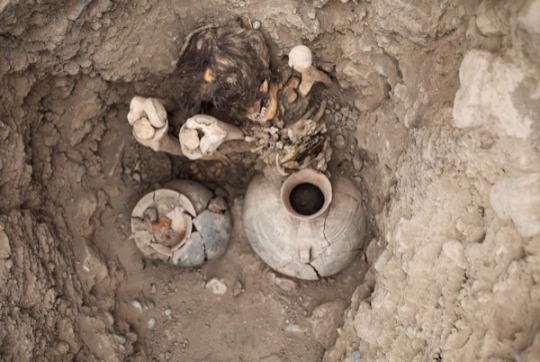

"I find it quite interesting that right in the heart of Miraflores, in the middle of the city, surrounded by modern buildings and constructions, an important site is still preserved," said lead archaeologist Mirella Ganoza.
Ganoza noted the mummy had long hair and was found seated with bent legs. The remains of the ancient figure were also found with its jaw and long hair still preserved.
The mummy is thought to date back to 1,000 A.D, belonging to the Yschsma culture, inhabitants of whom lived south of Lima.


"This discovery helps to complement the information we know about the Ychsma culture so far," said Ganoza.
The discovery is the latest in string of century-old discoveries of mummies and pre-Hispanic remains made in Lima, including the discovery in June on a hilltop of a mummy found surrounded by cocoa leaves.
In March, a Peruvian man was arrested and charged for illegal possession of historical patrimony after he was found in a possession of a mummy believed to be 600 to 800 years old in his cooler delivery bag.
The Huaca Pucllana site is viewed as a Pandora's Box and archaeologists anticipate that many more artifacts could be found.
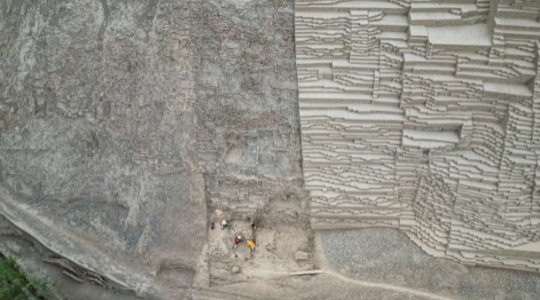
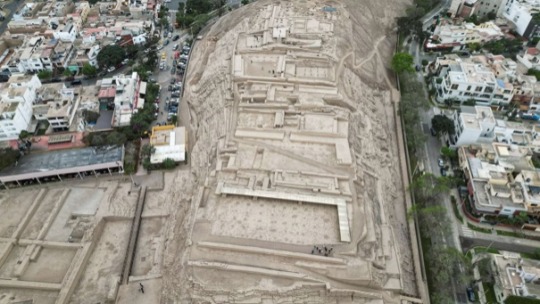
#Archaeologists Discover 1000-Year-Old Mummy With Long Brown Hair in Peru#Huaca Pucllana archaeological site#Lima Peru#ancient tombs#ancient graves#ancient burials#ancient artifacts#archeology#archeolgst#history#history news#ancient history#ancient culture#ancient civilizations#Yschsma culture#Yschsma history
32 notes
·
View notes
Text
All day preparing two important corporate meetings in The Hague tomorrow. 1st one's with stakeholders in sustainable supply chain solutions in Peruvian cocoa harvesting, the other is personal and is me formally applying for the upscaled function (a formality). Time to drop the deadbeat skater gf beanie, and bring on the suit and manners :-)
#Contemplating my ability to adhere to the hague's etiquettes + values + norms after walking around like some hobo since november lmao#it's a balance thing i guess#but no worries. I got this#personal
7 notes
·
View notes
Text
Last night's winner was Texas Pecan
It tastes...like a pecan pie??? But without being sickly sweet, and without the flaky crust. It has caramel and cocoa scents and it's ohhhh so good! But it's not too rich like the pie. One can actually fully appreciate this without feeling like they've just given themselves diabetes after a single taste!
Tonight’s teas:
Twinings Pure Oolong Fiji Island Coconut Twinings Lemon Delight Twinings Decaf English Breakfast Peruvian Cacao Pu-Erh Grapefruit Basil (no link - described as “refreshing and tart, this stunning black tea combines notes of grapefruit, orange, and basil with a zest of lime!”)
Thanks for helping me get rid of the tea. :)
2 notes
·
View notes
Text
Day 18 - Sacred Valley
We have breakfast at 7am so that we are ready for Lito to pick us up at 8am. I found Lito as a recommendation on a Facebook group. As soon as he picks us up I know that he is going to be a good guide - his English is really good. We’ve arranged to see 5 things and then be dropped off our at accomodation in Ollantaytambo.
Our first stop is Chinchero. It’s another multi purpose Inca site - Lito explains that it would have had housing, agriculture and religious a temple.
The site was probably built in the 1300s (this is before the height of their powers in the 1400s).
Lito explains that religious temples would have used the highest quality stone work. Whilst terraces were built for agricultural purposes.
Each stone is carved by hand and no mortar is used yet they look like they fit together perfectly. It’s so impressive the engineering skills they had back then. The stones can only survive earthquakes and still stand today because they hace a tongue and groove mechanism to lock together. Hematite is a type of stone that has a high iron content. This was likely used as a tool to carve the stones.
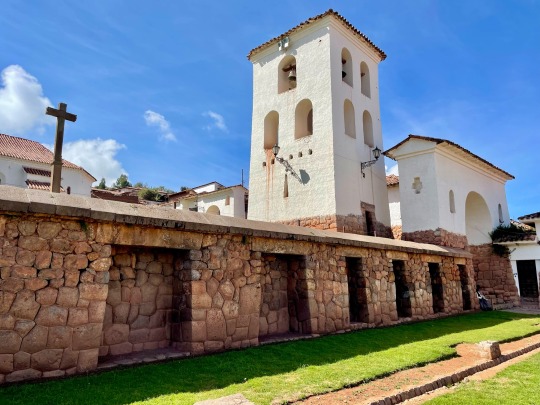

Upon questioning further we realise that it would have been slaves that built the structures. As an example Saksaywaman took 10,000 people to build. Somewhere like Chinchero would be about 5,000 people. Even with such large numbers of people towns like Ollantaytambo and Machu Picchu would have taken 30+ years to complete.
Our second stop is an Alpaca farm. First we get to feed the Llamas and Alpacas and see the guinea pigs. The poor things are being sold for food and Lito is asking the owner if he has been selling a lot recently (it’s a specialty for Mother’s Day). Then the owner gives us some information - it has social aims to provide jobs for single mothers who have a pretty tough time in Peru. We learn (with demonstrations) all about the washing, spinning and dying process using traditional techniques. We are both given some bugs from a cactus plant and told to squash them in our hands - we both nearly scream when a bright red liquid covers our hands. From there, things are added e.g. salt that can change the colour of further. We each buy a jumper as a souvenir.
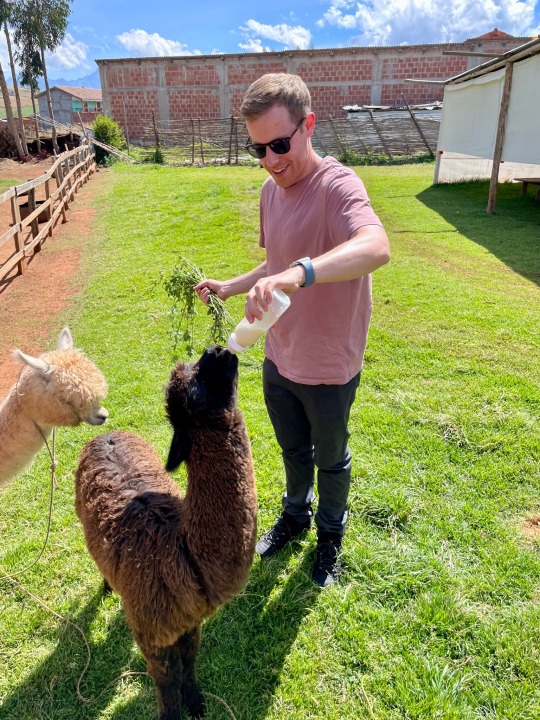
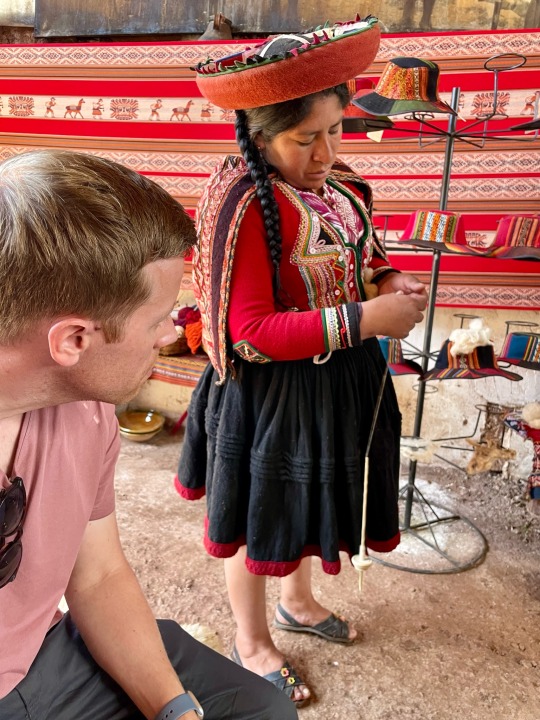
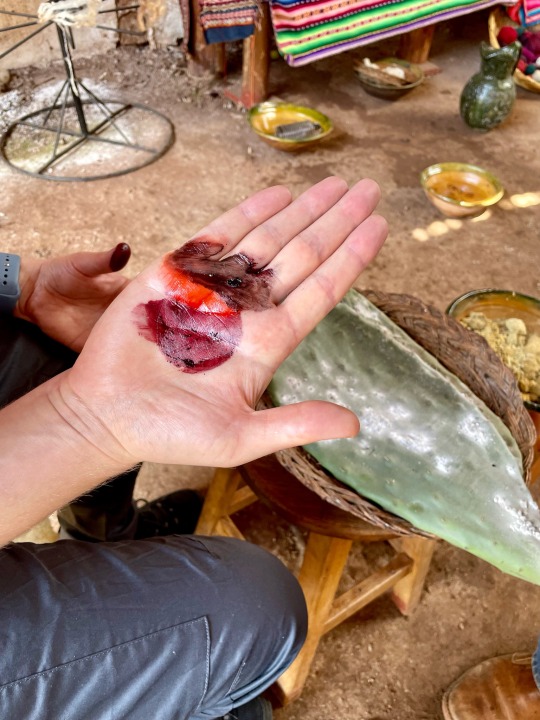
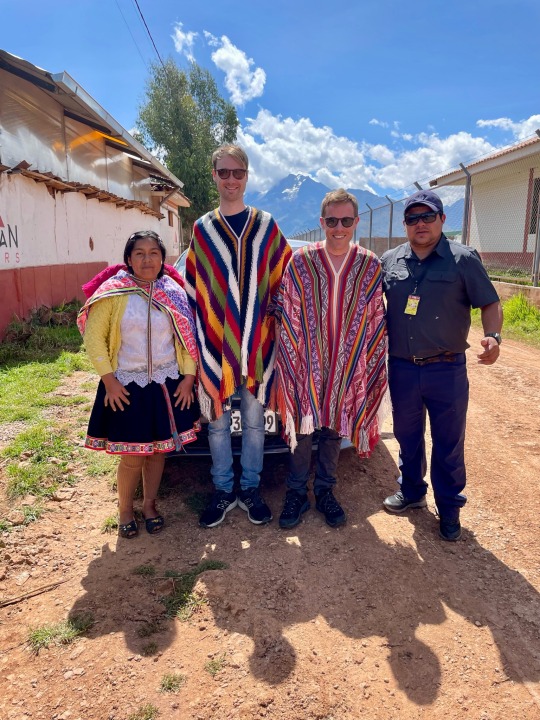
Our next stop is Moray where there are perfectly circular terraces exist. Historians initially thought it was an amphitheater as Incans used circles for their rituals. However it turns out that it was used for farming and specifically experimental farming. Each terrace is its own microclimate and the temperature at the centre is the warmest. They managed to adapt plants from lower elevations eg there is evidence of cocoa having been planted here. In order to do this they had to bring soil from subtropical areas to be able to grow the cocoa plants as the soil here is not fertile enough.
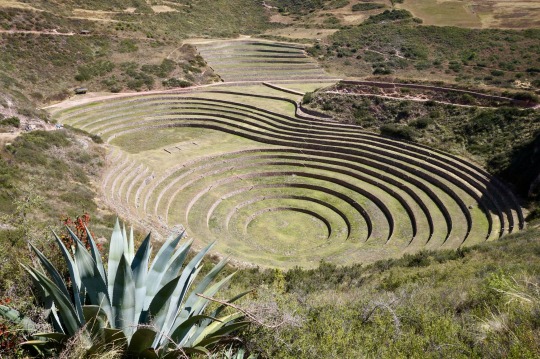
Only one of the three circular terraces has been stored back in the 1990s. With the other two you can clearly see the stonework is still at the site and will likely be put back at some point in the future.
At this point Lito uses his guide books to show us a few things - firstly the terraces are not just built with stone. Each terrace has layers of soil, sand, gravel and stones for drainage. All of these would have had to have been brought in 🤯 Also we see an image that shows the class hierarchy in the Incan times. In fact…only the royalty were actually referred to as Incans and they had their own language. The rest of the people spoke Quechuan and there is a very clear social hierarchy down to the slaves.
Lito is able to speak Quechuan - the native language. He learnt this from his grandparents. It’s good to hear that the language is still alive and thriving outside of Cusco. We’ve also noticed that the Peruvian culture is well and truely alive e.g. traditional clothing is not just for tourists - it’s something that they all seem to still wear and is really nice to see.
As we leave via Moray town Lito stops and we buy some chicha from a vendor through the car window (ordered in Quechuan). It’s a fermented corn drink that has a low alcohol content. We get the one with strawberry. Lito says that this is drank in place of water in Moray and Jack asks “I assume the kids don’t drink this though?” But oh no, the kids drink it too 😂
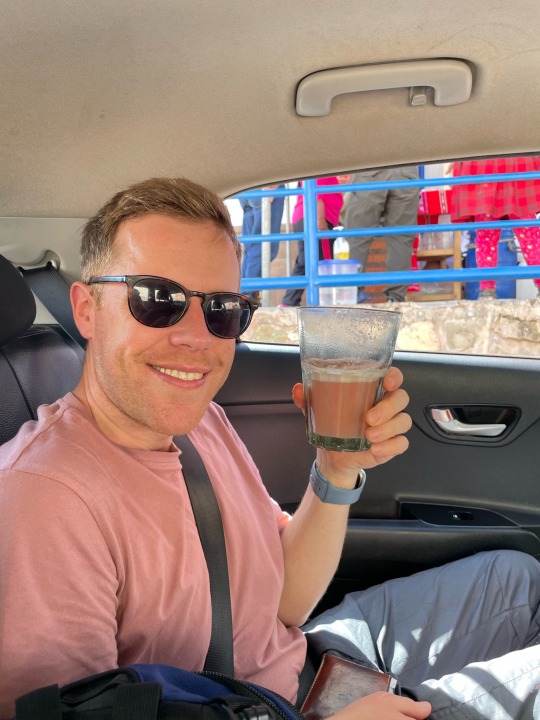
Our next stop is the Maras Salt mines. The mines are collectively owned by the town and every resident is entitled to their own ponds but they have to maintain them themselves. Newer residents of the town will need to built their ponds at the very bottom of the hill.
The salt is formed because the spring is naturally salty it’s very unusual but they think that the mountain is full of salt and the water dissolves it as it comes out. The water is directed via channels that go to leach of the pools. The water fill the pools and within 5 days it has evaporated. They repeat the process 5-6 times to get about 10ish centimetres of depth. The layers have different properties - the lower ones are brown salt with minerals, the middle ones are pink salt and the top is white salt. It is believed that the Incas used this site to harvest salt, however in recent times it wasn’t until the 1970s that the ponds were created and it has been expanding from there ever since.
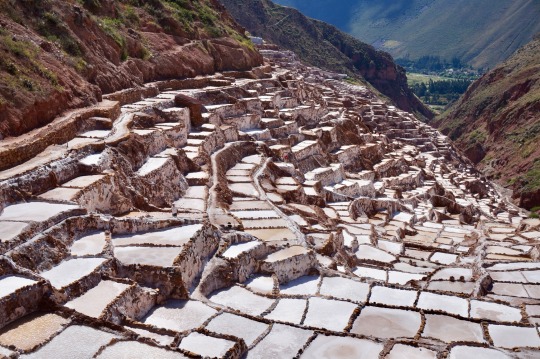
We stop for lunch at a buffet restaurant which is needed by this point!! Jack tries guinea pig but I can’t do it after seeing them at the Alpaca farm earlier today.
Our last stop is the Ollantaytambo Incan site. We drive through the cobblestone streets of the town and in the main square.
This area was strategically important as it was the intersection of three valleys (each of which was an inca trail). It was a place where people from the four different states could meet via the different trails and trade food.
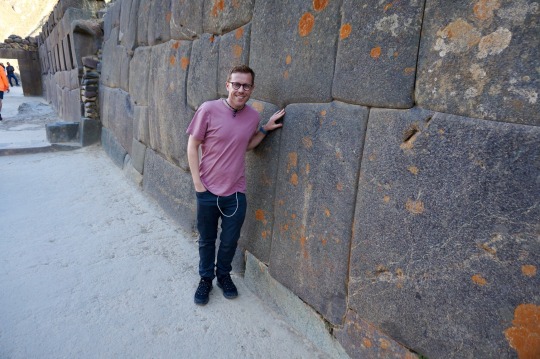
Ollantaytambo is one of the latest sites to be built and is thought to still have been in progress when the Spanish invaded. The site is again multi purpose - you can see terraces for agriculture, there is a site that is used as a calendar - the sun will rise either side of the mountain in summer vs winter and in the middle of the mountain during spring/autumn. At the top is a temple - Lito explains that this is the piece that was still in progress. The stonework here is the most impressive of all - the pieces are absolutely huge. Also they had by this point innovated their techniques with the “tongue and groove” to improve it:
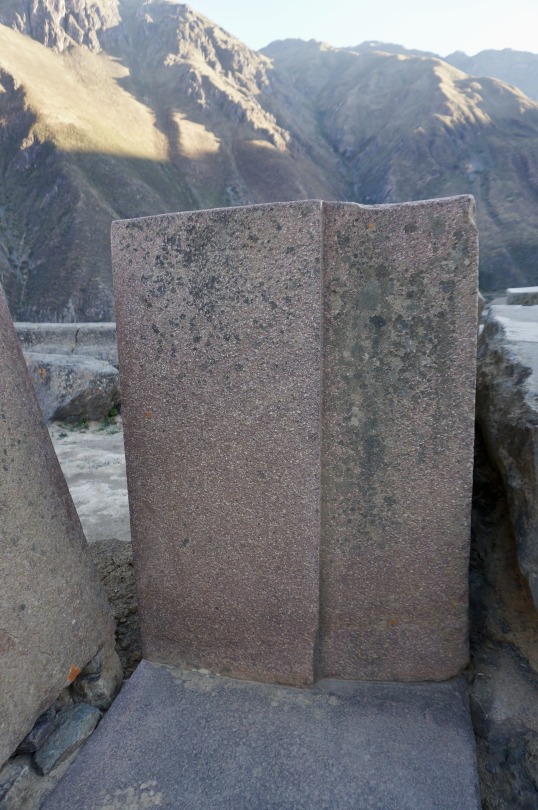
Whilst the Incas didn’t have a written language on the temple you can see vague carvings of the Inca cross - this represents life stages going up (prime of your life), going down (as you get older), death and the afterlife (further down), and back up to rebirth. When the Spanish arrived they tried to remove as many symbols as possible in order to establish Catholicism as the only religion.
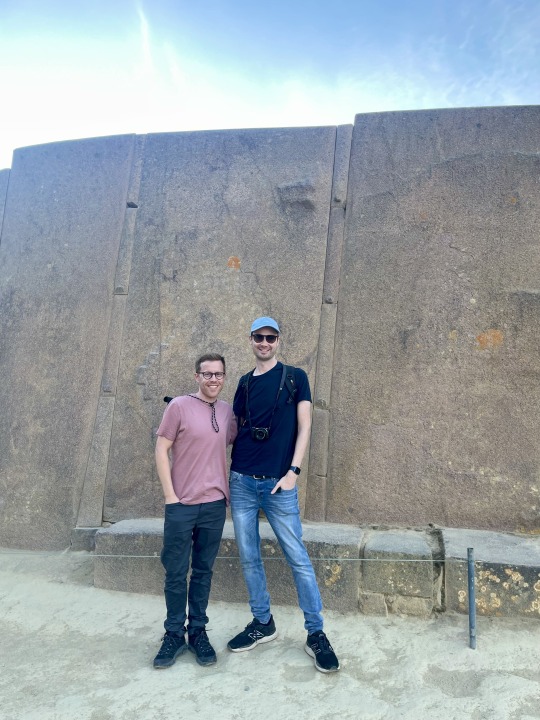
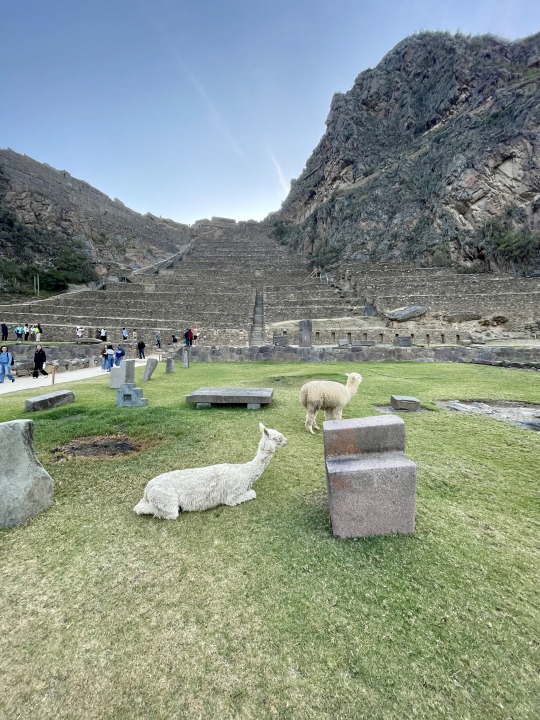
Wow it was a big day of sightseeing so Lito drops us off at our hotel in Ollantaytambo. We say our farewells and check in. The B&B is a bit basic but it’s big selling point is that it has a terrace on the roof that overlooks the town and the Inca site, however it’s too cold to spend more than a few minutes up there.
2 notes
·
View notes
Note
4! 17! 34! 40! 41! 44! 45! 46! 48! 50!
ALSO WHY ARE YOU IN THE HOSPITAL?! ARE YOU OK?! ??!
4. Favorite 80's/90's tv show/s? Cheers, the 80s revival of The Twilight Zone, Perfect Strangers, Buffy the Vampire Slayer, Frasier, Friends, NewsRadio, The State, Mr. Show with Bob & David, ER, The Practice, Dawson’s Creek, Felicity, My so-called Life, Daria, Tales from the Crypt, King of the Hill.
17. What was the last play you saw? The Music Man, local community theatre production.
34. What are you deepest, most nonsensical fears? (You don't have to share this, make something up, have some fun.) I definitely have a fear of everyone I’ve ever known who has died watching me at my most humiliating moments from some after life. Perhaps as a punishment to them?
40. How do your take your coffee/cocoa/tea? I don’t drink any of these often. Coffee usually a soy latte, green tea, and cocoa pretty classic with a marshmallow or some whip cream.
41. Something you really want to watch but can't for some reason or haven't yet? There is so much I haven’t seen in the past decade. Just off the top of my head I’ve wanted to watch other seasons of True Detective, only seen and loved the first. Always wanted to check out The Knick, also only saw first seasons of The Americans and Mr. Robot and want to finish those.
44. What are some of the little things that make you happy? I love making people laugh, whether or it’s by making a joke or doing something funny, or someone reading something I’ve written or hearing someone else perform something I’ve written that makes them laugh.
45. Name a few characters you relate to? Nick Miller from New Girl, Ser Jorah Mormont & Jon Snow from Game of Thrones, Ted Lasso & Roy Kent from Ted Lasso, Kitty Pryde from X-Men comics.
46. Describe some of the knick knack/odds and ends in your room? I have several Stars Wars, Marvel and DC figurines/toys. A ceramic sugar skull I got at a Day of the Dead festival in Mexico when I lived near the border. An old Joe Montana football figure I’ve had since the late 80s. I have another wooden carved figure of “see no evil, speak no evil, hear no evil” in the form of the three 🙈 🙊🙉 monkeys that my late grandmother had at her office for many years. I have a Peruvian fertility statue that I got from my late Great Uncle who was world traveler and artist.
48. What is a hobby you’d like to take up? I’d love to get a shop set up and work with either metal smithing or making resin art, maybe even metal restoration. Don’t know that I have any skill for any of it but it looks interesting and fun.
50. How does one make you smile? Others smiling and being happy does the job for me. It’s truly contagious.
And I’m now released from the ER. I do have a kidney stone moving down my bladder and have to follow up with a Urologist this week as it’s too big to pass on my own. Feeling better at the moment so fingers crossed 🤞 that keeps up.
2 notes
·
View notes
Text
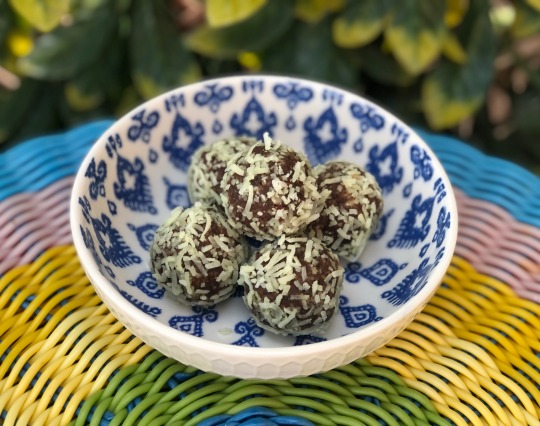
Peruvian Superfood Bliss Balls
[[MORE]]
1 cup Brazil nuts 1 cup almonds 1 cup coconut flakes 1 cup dates, pitted and chopped 2 tbsp cacao nibs 2 tbsp cocoa powder 2 tbsp chia seeds 2 tbsp maca root powder 1 tbsp lucuma powder 1 tsp ground fennel seed 1 tsp cinnamon 1/2 tsp sea salt 1/4 tsp turmeric
1/2 cup natural peanut butter 1/2 cup pure maple syrup 2 tbsp melted coconut oil 1 tsp pure vanilla extract 1 tsp natural chocolate extract (optional)
Coconut flakes, for rolling
Place the; Brazil nuts, almonds, coconut flakes, dates, cacao nibs, cocoa powder, chia seeds, maca, lucuma, fennel seed, cinnamon, sea salt, and turmeric in a food processor. Process until crumbly.
Add the; peanut butter, maple syrup, melted coconut oil, vanilla extract, and chocolate extract. Process again until you have a well-combined sticky mass. Transfer to a large mixing bowl and place in fridge for at least one hour.
With clean damp hands, roll batter into small balls. Roll balls into coconut flakes.
Store in fridge or freezer.
#bliss balls#vegan bliss balls#vegan treats#healthy treats#superfood bliss balls#peruvian superfood bliss balls#peruvian superfoods#vegan energy balls#energy balls
5 notes
·
View notes
Text

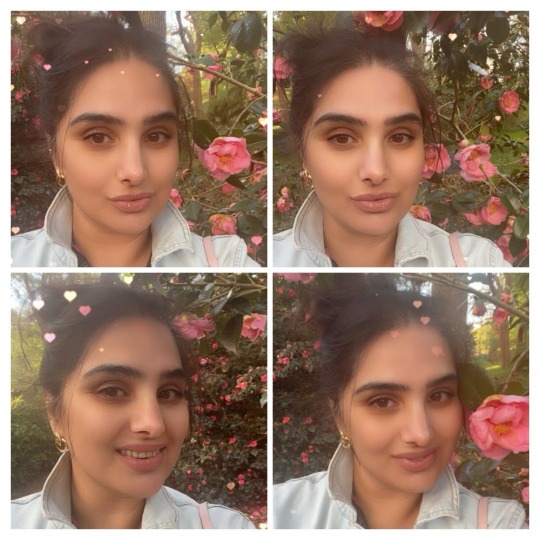
Seriously…. No joke…
I ❤️ Peruvian 90% Cocoa Dark Chocolate with my cup of tea.
0 notes
Text
Healthworks Superfoods Organic Cacao Powder - 32 Oz / 2 Lbs - Cocoa Chocolate Substitute - Rich Choclate Flavour - Sugar-Free, Keto, Vegan & Non-GMO - Peruvian Bean/Nut Origin - Antioxidant Superfood
Healthworks Organic Cacao/Cocoa Powder is grown and harvested sustainably on small Peruvian farms to come to you in its purest, most nutrient-rich state. Healthworks Cacao Powder is certified organic, pure, all-natural, and vegan.Our cacao powder is a nutrient dense superfood that is grown, harvested, and pressed into fine powder. The process we use retains the cacao’s authentic rich flavor and…
0 notes
Text
Maca Powder Chocolate: A Delicious Way to Boost Your Health

Chocolate lovers rejoice! There’s a way to indulge your sweet tooth while reaping significant health benefits by incorporating maca powder into your chocolate treats. This superfood-chocolate combination is more than just a tasty snack; it’s a powerhouse of nutrients that can enhance your energy, mood, and overall well-being.
What is Maca Powder?
Maca powder is derived from the root of the maca plant (Lepidium meyenii), native to the Andes mountains of Peru. Often referred to as “Peruvian ginseng,” maca has been used for thousands of years as a natural remedy to boost stamina, fertility, and vitality. Maca root is dried and ground into a fine powder, making it easy to add to a variety of foods and beverages.
The Benefits of Maca Powder
Maca powder is renowned for its numerous health benefits, including:
Energy Boost: Maca is a natural adaptogen, helping your body cope with stress while providing a steady source of energy without the jitters associated with caffeine.
Hormonal Balance: Maca can support endocrine health, making it a popular choice for addressing symptoms of menopause, PMS, and hormonal imbalances.
Improved Mood: Regular consumption of maca has been linked to reduced anxiety and enhanced mood, thanks to its natural compounds that regulate neurotransmitter activity.
Nutrient-Rich: Maca is packed with essential vitamins and minerals, such as vitamin C, copper, and iron, along with beneficial plant compounds like flavonoids.
Why Pair Maca Powder with Chocolate?
Chocolate, particularly dark chocolate, is another nutrient-dense food. It contains antioxidants, magnesium, and natural compounds that promote the release of feel-good hormones like serotonin. When combined with maca powder, chocolate not only tastes indulgent but also offers a synergy of health benefits.
The earthy, slightly nutty flavor of maca powder pairs perfectly with the rich, bold taste of chocolate. Together, they create a delicious and functional treat that can be enjoyed as a snack, dessert, or even as a quick energy boost before a workout.
How to Make Maca Powder Chocolate
Here’s a simple recipe to try at home:
Ingredients:
1 cup dark chocolate chips (70% cocoa or higher)
1 tablespoon maca powder
1 tablespoon coconut oil
Optional: 1 teaspoon honey or maple syrup for sweetness
Optional: Nuts, seeds, or dried fruit for added texture
Instructions:
Melt the dark chocolate chips and coconut oil in a double boiler or microwave in 30-second intervals, stirring until smooth.
Stir in the maca powder and sweetener (if using) until fully incorporated.
Pour the mixture into a silicone mold or onto a parchment-lined baking sheet.
Sprinkle with your choice of toppings, such as nuts, seeds, or dried fruit.
Refrigerate for 1-2 hours or until the chocolate is firm.
Pop the chocolate out of the mold or break it into pieces and enjoy!
Tips for Incorporating Maca Chocolate into Your Diet
Morning Boost: Add maca chocolate pieces to your smoothie bowl or oatmeal for a nutrient-packed breakfast.
Pre-Workout Snack: Enjoy a small piece of maca chocolate to fuel your exercise routine.
Healthy Dessert: Serve maca chocolate alongside fresh berries for a guilt-free dessert option.
0 notes
Text
https://www.reuters.com/world/americas/peru-declares-state-emergency-regions-scorched-by-forest-fires-2024-09-18/
LIMA, Sept 18 (Reuters) - Peruvian President Dina Boluarte on Wednesday declared a state of emergency in three regions affected by devastating forest fires that have burned through swathes of the nation's Andean and Amazonian crop lands and left 16 dead.
The heavily forested northern regions of Amazonas, San Martin and Ucayali will be under the new emergency measures, she said, following several requests from local authorities for more resources to be allocated to fight the fires.
Forest fires are frequent in Peru between August and November, largely due to the burning of dry grasslands to expand agricultural frontiers and sometimes by land traffickers, according to data from Peru's environmental ministry.
Boluarte urged farming communities to stop burning grasslands as thousands of hectares have gone up in flames, while noting that the fires are also a result of the lack of rainfall caused by climate change.
Speaking at the government palace, the president said Peru had registered 238 fires across most of its regions, and some 80% of these were "controlled".
Ucayali's regional governor had earlier called for military aircraft to help firefighters and volunteers put out the fires that have spread to rugged, hard-to-access terrains and are damaging the area's palm and cocoa crops.
Satellite data analyzed by Brazil's space research agency earlier this month registered a record 346,112 fire hotspots so far this year across South America, surpassing the 2007 record of 345,322 hotspots in a data series that goes back to 1998.
0 notes
Text
Peruvian La Naranjilla Naturally Processed Arabica Marshall by Felipe Marin
Peruvian La Naranjilla Naturally Processed Arabica Marshall by Felipe Marin. Expect to find Cocoa, blue berry and vanilla on the finish.
This Peruvian La Naranjilla by Felipe Marin is sourced from And sons. Peru as a Origin Peru has quietly emerged as a leading origin in the specialty coffee industry. Its unique geography, diverse growing regions, and commitment to sustainable practices make Peruvian coffee a great choice for discerning coffee lovers1. The first reference to coffee cultivation in Peru dates back to the 18th…
0 notes
Text
10 Countries to Visit for Eco-Friendly Chocolate Tourism
Eco-Friendly Chocolate Tourism
Sustainable and Delicious:10 Countries to Visit for Eco-Friendly Chocolate Tourism
As a conscious and wise traveler, you should experience the best chocolate while being mindful of your environmental impact.
Here's a guide to 10 countries where genztourism suggests offering delectable chocolate and prioritizing sustainable tourism practices, making it the perfect eco-friendly destination for you.
1.Belgium:
Indulge in high-quality chocolate sustainably in Belgium.Many Belgian chocolatiers use locally sourced ingredients and eco-friendly packaging, making it an ideal destination for sustainable chocolate tourism.
2.Switzerland:
Switzerland is renowned for its chocolate and commitment to sustainable tourism practices. With a strong focus on renewable energy and carbon footprint reduction, Switzerland is a perfect choice for eco-friendly travelers.
3.France:
France is a haven for artisan chocolatiers prioritizing sustainability.Many chocolatiers use organic and fair-trade ingredients and have eco-friendly packaging practices, making it easy for you to enjoy sustainable chocolate tourism.
4.Italy:
Italy is an excellent destination for sustainable chocolate tourism.Many Italian chocolatiers use locally sourced ingredients and eco-friendly packaging, ensuring a guilt-free indulgence for eco-conscious travelers.
5.Mexico:
Discover the birthplace of chocolate while supporting sustainable farming practices.Many Mexican chocolatiers use organic and fair-trade ingredients, making it a perfect destination for eco-friendly travelers.
6.Ecuador:
Ecuador is renowned for its high-quality cocoa beans and sustainable farming practices.With minimal processing, Ecuadorian chocolate preserves the natural flavor of cocoa while protecting the environment.
7.Ghana:
Ghana is one of the largest cocoa producers in the world, and the country has implemented sustainable farming practices.Ghanaian chocolatiers often use organic and fair-trade ingredients, making it an eco-friendly choice for chocolate tourism.
8.Peru:
Peru is a unique and sustainable destination for chocolate tourism. Many Peruvian chocolatiers use locally sourced superfoods like quinoa and eco-friendly packaging, making it a guilt-free indulgence for eco-conscious travelers.
9.United States:
The United States has a growing community of eco-friendly chocolatiers prioritizing sustainable practices. Many American chocolatiers use and fair-trade ingredients and have implemented eco-friendly packaging practices.
10.Japan:
Japan is an excellent destination for sustainable chocolate tourism in a unique setting. Many Japanese chocolatiers use high-quality, locally sourced ingredients and eco-friendly packaging, making it an ideal destination for eco-conscious travelers.
Sustainable chocolate tourism is not only possible but also delicious and something unique! These ten countries offer some of the world's best chocolate while prioritizing sustainable tourism practices, making it the perfect choice for eco-conscious travelers. By indulging in sustainable chocolate tourism, you can enjoy guilt-free chocolate while supporting sustainable practices and protecting the planet. We at Genztourism aim to provide you with the best eco-friendly travel packages!
Click here to learn more: https://www.genztourism.com/
#sustainability#traveling#tour and travel#ecofriendly#food#chocolate#food photography#travelphotography
1 note
·
View note
Text
Day 14 - Cusco Free Day
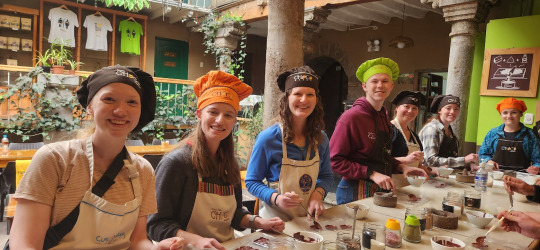
Photo by Holly
This was our free day to explore Cusco, however there were scheduled events in the morning and evening.
We started the day at a chocolate museum, where we were taught how to shell and grind cocoa beans. We made a cocoa tea, a bitter spiced Mayan hot chocolate, and a creamier hot chocolate invented by the conquistadors.
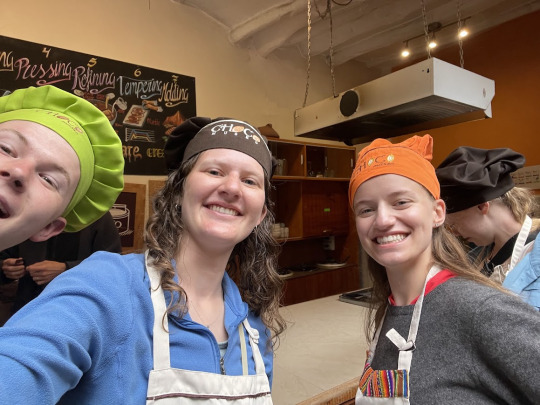
Photo by Alyssa
Alyssa and I are officially award winning chocolatiers, as we won a dark chocolate Sole coin for having the best texture to our finely crushed cocoa beans.
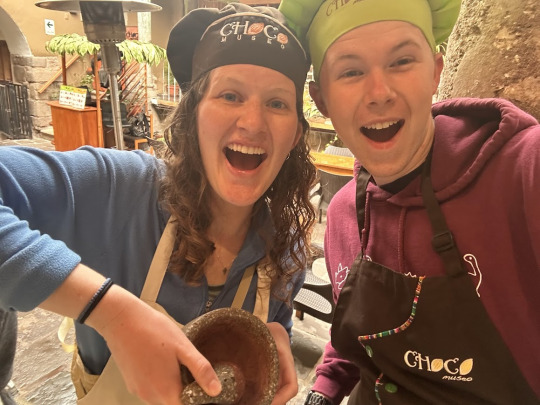
Our class consisted of our group, a couple from Pennsylvania, and a newlywed couple from Peru and Finland who are living in London.
At the end of the class we got to create our own chocolates using special toppings.
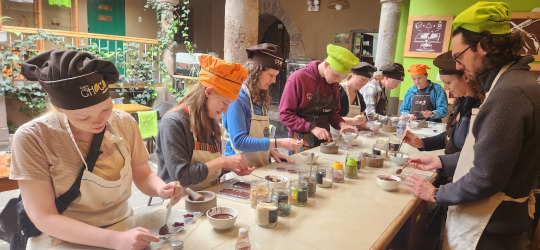
Photo by Holly
I made some with Peruvian salt, some with peanuts, and some with quinoa. I also added sprinkles to half of them, for color.
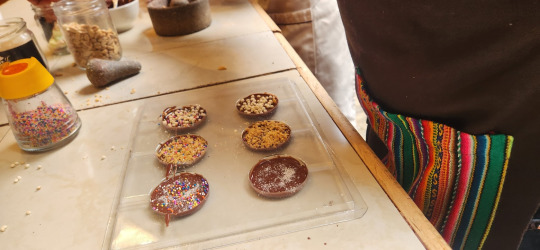
Photo by Holly
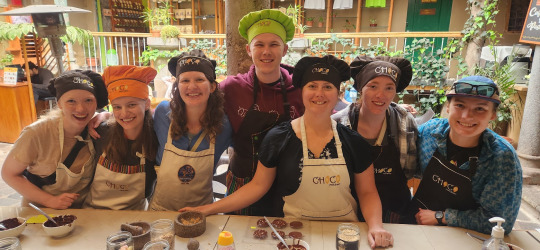
Photo by Holly
After the class was over we explored the museum and factory upstairs as well as the art shop next door.
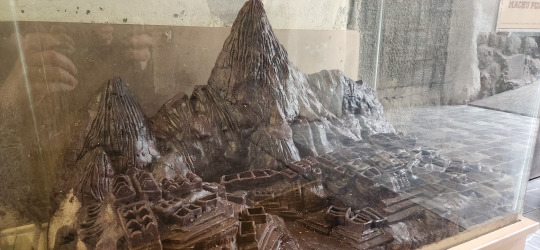
Photo by Holly
Haley decided that she was going to get this sweater, for herself.
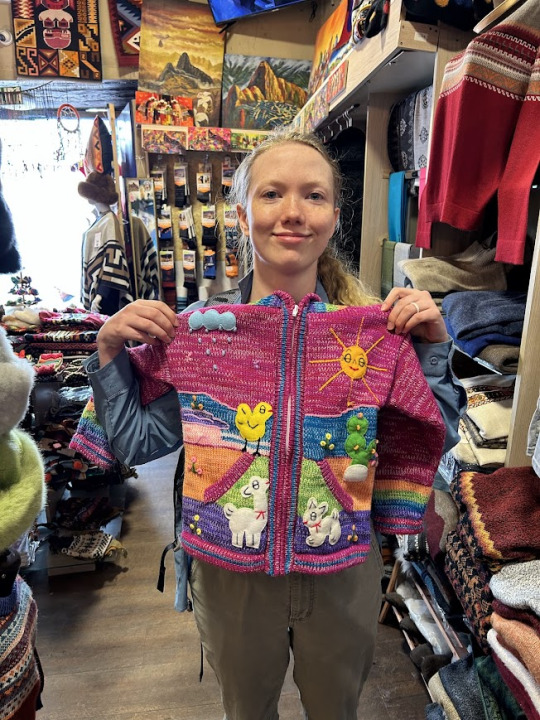
We picked up our chocolates when they were ready and split up and went in opposite directions, with Haley, Bernadette, and Alyssa going souvenir shopping while Austyn, Claire, and I went to the Inca museum. There were lots of artifacts from the various pre-Inca civilizations that I had researched for my presentation.
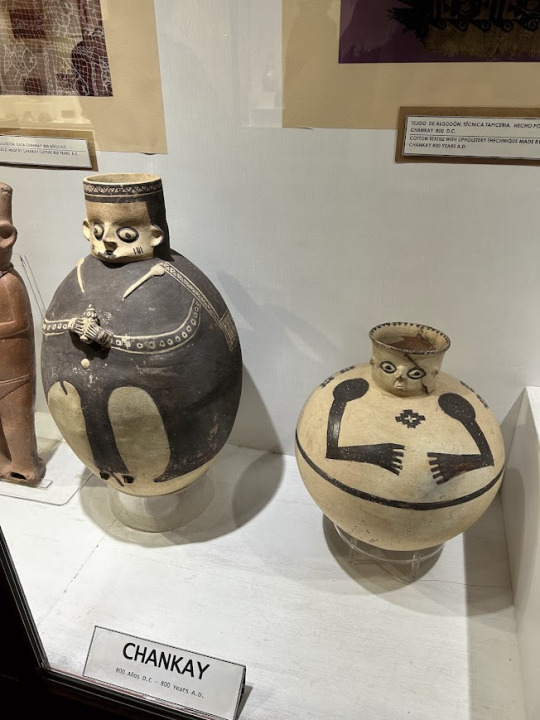
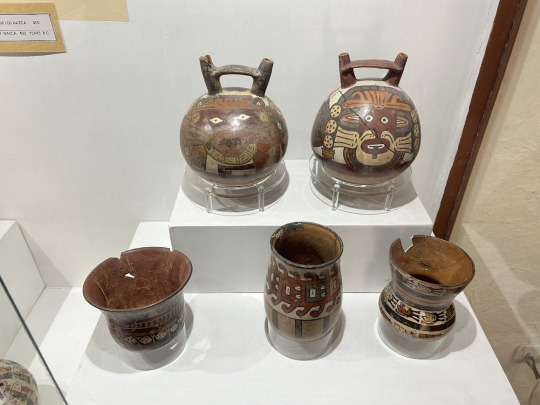
While admiring turquoise sculptures, I chatted with a guy from Johannesburg that had arrived in South America at the same time as us but had already visited Brazil, Colombia, Uruguay, Argentina, and Chile!
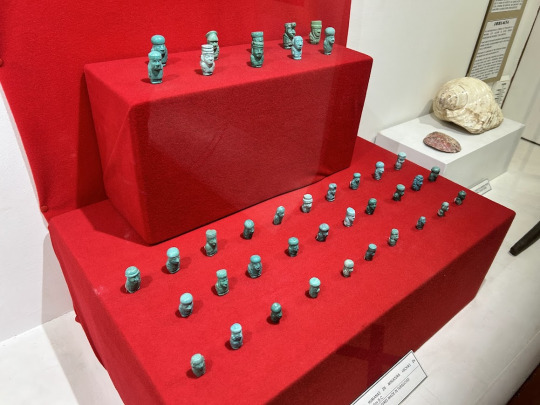
There were miniature models of farming practices as well as archeological sites like Machu Picchu.
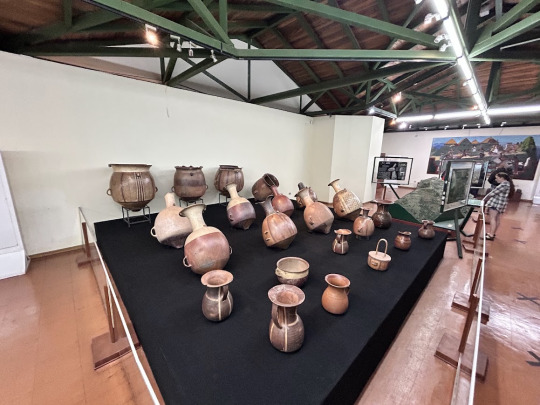
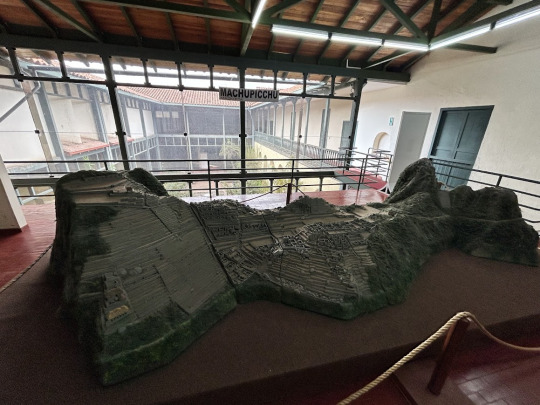
The museum also contained textiles and continued into the colonial period.

My favorite exhibit was one of pre-colonial musical instruments. Some of them were filled with water and used the shape of the internal chambers and the water sloshing around creating air pressure which was translated to various complex animal noises! I’ve never seen anything like it.
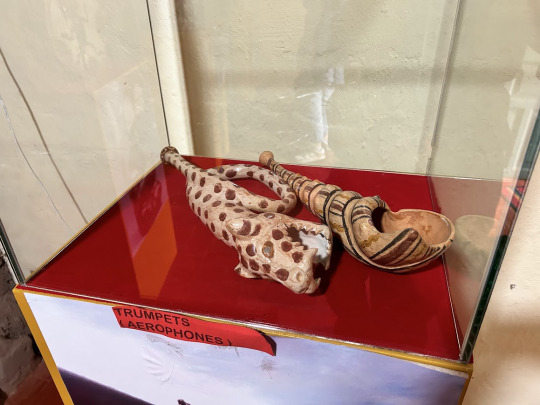
Kinda museumed out, we headed back to the hotel to set things down. We headed back out into the city shortly to find lunch. We explored a bunch of little shops and stopped to read lots of restaurant menus before finding one we were satisfied with, Jamas. We were seated on the top floor, which had 5’8” ceilings. The floor wasn’t flat, so this height changed depending on where you were standing.
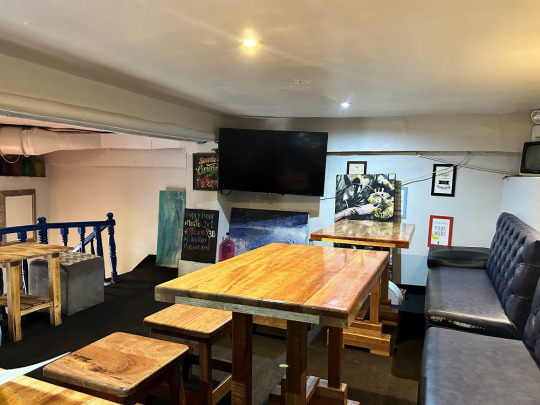
I had a salchipapa the other day, and had thought the concept was pretty good but was lacking in its execution. I got a "Salchipapa A la Pobre" which added fried banana and egg to the salchipapa base of potatoes and sliced sausage. Apparently “A la Pobre” just adds fried banana and egg to something. Imagine all the tasty food combinations we could have if we could just added that to a dish in the states!

We wrote in our journals and enjoyed our food before heading back to the hotel. I joined with Bernadette, Haley and Alyssa as the were headed out about the same time. We stopped by a few grocery stores and I got money out at an ATM. I even picked up more Chomp, both the orange and chocolate flavors.
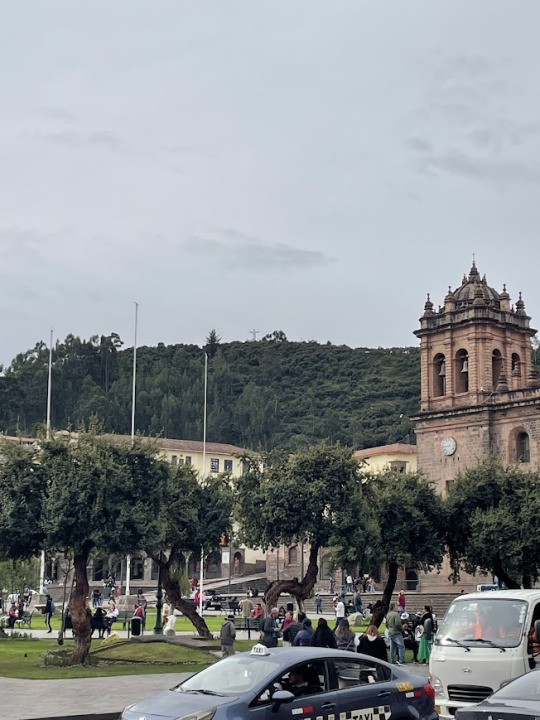
Photo by Alyssa
Bernadette wasn’t feeling well, so she and Alyssa headed back to the hotel while Haley and I poked around in shops and slowly made our way in the same direction.

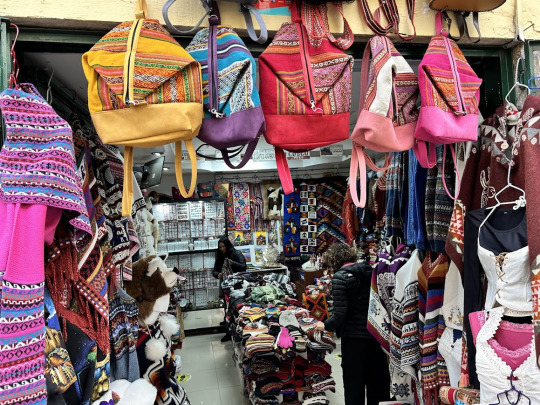
We all headed out from the hotel across town to head to the planetarium. We met beside a fountain in the square with the chocolate museum.

The planetarium employees picked us up and brought us all in a van into the hills around Cusco in multiple loads. It was cloudy, so we could only see the moon and the brightest of the stars through the telescopes. We went inside and watched a constellation talk on their dome and a PowerPoint about how the Inca did astronomy. I’d tell you more, but as soon as the lights went out in that dome, I fell asleep.

Photo by Holly
We moved to another room and had one more PowerPoint about Peru geography before the night was over. We played with a globe and tried to guesstimate its age based on political boundaries. It still had two Germanys!
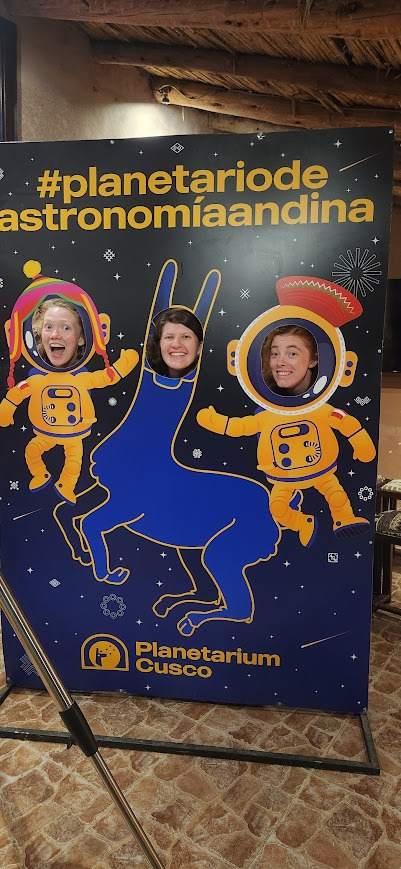
Photo by Holly
We rode the bus back to the central square where we regrouped and walked to a restaurant. I wasn’t feeling great, so I ordered a chicken soup, which was pretty good, but not nearly as exciting as the alpaca burgers others got! The live musicians played Andean covers of Chiquitita and Hallelujah, as well as a repetitive and unfortunately catchy song called Pachamama, found here on YouTube.
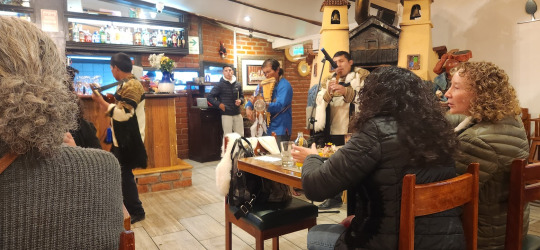
Photo by Holly
Afterwards, Austyn and Claire went back to the hotel while the rest of us went to a salsa dancing class. I danced with Alyssa and we pretty quickly got the hang of it!
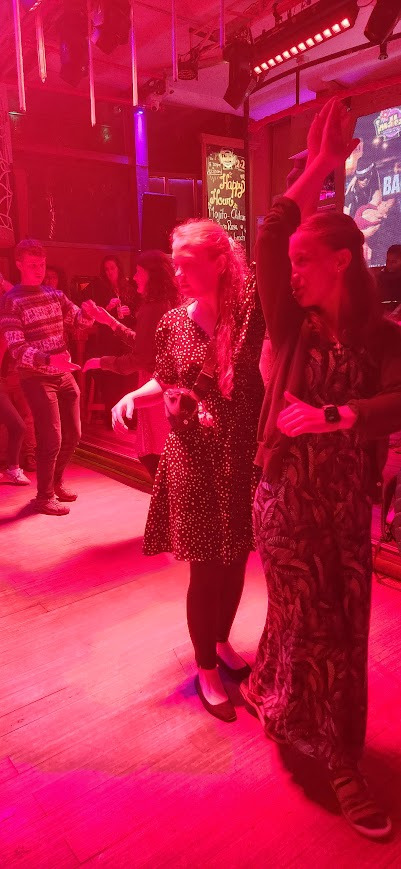
Photo by Holly
However, after about a half hour of being hit on by Peruvian men, everyone else was ready to go. We all walked back to the hotel and collapsed for the night.
1 note
·
View note
Text
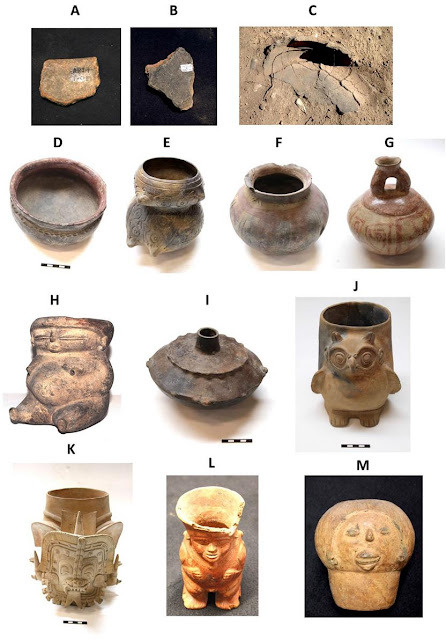
Peruvian origin of cocoa (Select English Translation)
http://przedkolumbem.blogspot.com/2024/03/peruwianskie-pochodzenie-kakao.html
0 notes
Text

Peruvian origin of cocoa (Select English Translation)
http://przedkolumbem.blogspot.com/2024/03/peruwianskie-pochodzenie-kakao.html
0 notes